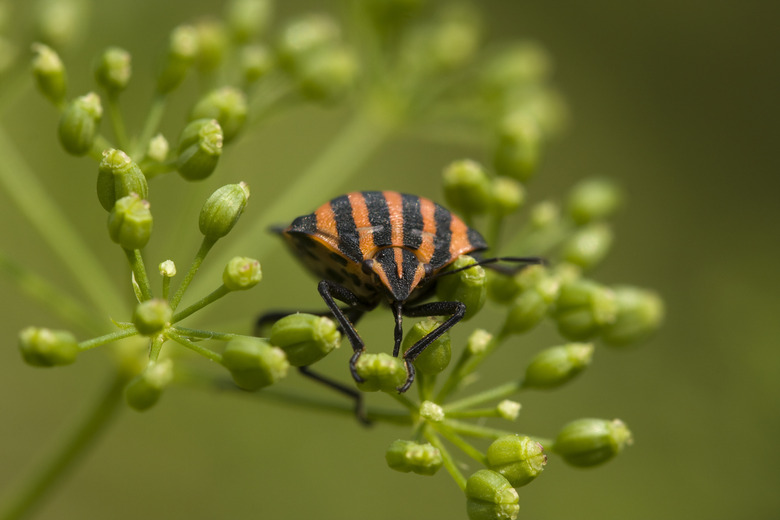How To Kill Chinch Bugs Naturally
If your lawn is looking like a patchwork quilt of green and dead yellow grass, you may have a chinch bug problem. There are a variety of chinch bug species throughout the United States, and they're usually found on dry lawns that get a lot of sun or are suffering from drought.
Spotting Chinch Bugs
Spotting Chinch Bugs
Adult chinch bugs are about a quarter of an inch long and are black and white with white wings folded across their backs. Baby chinch bugs, or nymphs, are even easier to spot with their bright-red bodies crossed by a single white stripe. Both young and adult bugs smell bad, especially when you step on them.
Female chinch bugs begin laying eggs in the grass in late spring or early summer. One bug can lay up to 500 eggs, which will hatch in one to three weeks. When these bugs start feeding on your lawn, it will begin to turn yellow in small patches. These patches will eventually turn brown and die no matter how much you water them. Chinch bugs cause the most damage between June and August on the sunniest patches of your lawn.
To check and make sure the damage to your lawn is caused by chinch bugs, pull back some of the turf at the edge and look for small black-and-white or red bugs. Another good place to look is where two blades of grass come together at the base.
You can also take a tin can or a coffee can and remove both ends. Force the can down into your lawn and fill it halfway up with water. Wait about 10 minutes. If you have chinch bugs, they'll start floating to the surface. Check your lawn in several spots if you don't find any bugs in the first place you look.
Preventing Chinch Bugs
Preventing Chinch Bugs
There are several methods you can use to prevent chinch bugs in the first place. They're not foolproof, but prevention is always easier than a cure.
- Keep your lawn as high as you can: Don't remove more than a third of the blades' surfaces when you mow.
- Keep your blades sharp: A clean cut with your mower promotes good lawn health.
- Aerate your soil: Dense soils typically support more chinch bug infestations.
- Improve your soil: Add a healthy organic compost or manure to your lawn.
- Use slow-release fertilizers: Heavily fertilized lawns are more susceptible to chinch bug infestations.
Chinch Bug Control
Chinch Bug Control
You've kept your grass long and improved and aerated your soil, and yellow patches are still appearing in your grass. Here are some ways to naturally control an outbreak of chinch bugs.
- Spot treat sections with organic products. Some companies, such as Planet Natural, offer an organic product called Safer Soap that you can use to kill chinch bugs.
- Dust your lawn with organic diatomaceous earth. This fine powder is made up of fossilized aquatic organisms. Chinch bugs are damaged when they climb through the powder, and it eventually kills them.
If all else fails, seek out the least toxic insecticide you can find. If you get started with a healthy lawn and keep it well watered during the summer, you may be able to avoid this pest altogether.
